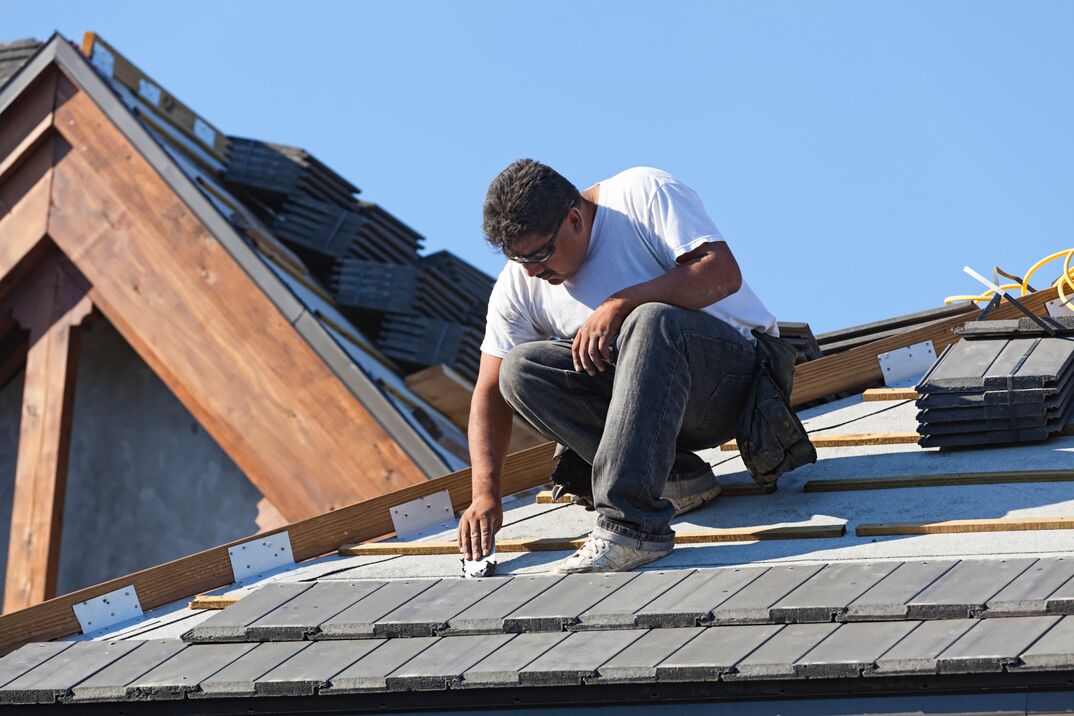How do you install a residential roofing system?
by siteadmin

The Proper Way To Install A Residential Roof
The contractor starts by removing all the old shingles. This is an intensive step but it's vital to prevent premature roof damage.
The contractor will install metal metal flashing along the front wall, chimneys (wide metal metal flashing), and at the gable-ends. He will also install a new drip-edge along the bottom edge of the roof.
Flashing
Flashings should be installed wherever there are gaps in the roof where water might seep. This includes the corner at which a roof dormer meets the wall. It also includes the chimney, vents in the kitchen, and even skylights.
Some roof features are required to use a two-part system of flashing, like chimneys. Base flashings go under the chimney while counter-flashings go above. This allows materials that expand and shrink due to temperature changes to move.
It's crucial to avoid nailing flashing to the wall AND the roof tiles. This will cause it develop a wrinkled, distorted look. This invites leaks. Choosing the right flashing is also very important. Copper is the best choice for flashing because it won't rust. It also looks great on a variety of roof types.
Nails
Even the littlest details can have a huge impact on your roof's performance and durability. If a high nail (also known by the name "high nail") is driven above a shingle’s nails zone, it will fail to secure the roof shingle. This can cause it to come loose in windy weather or blow off.
Manufacturers will provide detailed instructions regarding the positioning and driving of nails. Unfortunately, many installers ignore these instructions. This leads to a lot of misplaced or overdriven nailing.
To achieve the best corrosion protection, nails should be made out of galvanized or stainless steel, or from copper. Avoid using aluminum nail. They can oxidize exposing the sheathing to water.
Sealants
Sealants protect the roofing system from moisture and sunlight damage. Sealants are available in a variety of types depending on your project scope and local weather conditions.
Silicone sealants will withstand heavy showers and create a waterproof barrier. They reflect sunlight and keep homes cooler, reducing air conditioning costs.
Acrylic sealants can be used to protect against UV rays, while also offering moderate moisture resistance. They're common in the western and southwestern United States, where roof sun damages are a concern.
Polyurethane is resistant to water but not UV radiation. These sealants are perfect for sloped surfaces, where there is less chance of standing water. Thicker solvent-based sealing compounds can be applied with a brush or roller, whereas thinner liquid-based sealants work better when applied with a caulking or paint gun.
Installation
While DIYers who are knowledgeable can save a lot of money by learning how they can roof their own homes, the task is still very difficult. It takes a lot of time, effort, as well as quality materials to complete the job correctly. It's important to follow best practices when it comes safety and quality. This is especially true for roofing panels or roof shingles.
Install ice dam prevention in areas where it's needed. This synthetic waterproof barrier prevents melting of ice from backing-up under shingles or penetrating sheathing. Apply a layer or asphalt roofing over the sheathing.
Contractors then install the first course to the sheathing. It is important to follow the manufacturer's recommendations for placement and nailing. For example the shingle expositions should be equalized, with at least a 3-inch head-lap (unless the tiles specify a different lap). Metal roof panel are secured by clips, or a screwing edge that allows thermal expansion and contraction. Contact T2K Roofing Temple TX for all of your roofing needs.
https://www.t2kroofingtempletx.com/
The Proper Way To Install A Residential Roof The contractor starts by removing all the old shingles. This is an intensive step but it's vital to prevent premature roof damage. The contractor will install metal metal flashing along the front wall, chimneys (wide metal metal flashing), and at the gable-ends. He will also install a…
Recent Posts
- Roofing Company Savannah Sheds Light on the Lifespan of Roofs: How Long Should a Roof Last?
- Choosing the Best Gutters for Your Jacksonville FL Home
- Choosing the Best Gutters for Your Chicago Home
- Exploring the Drawbacks of Duct Cleaning: Insights from Air Vent Cleaning Charlotte
- Sons of Monaco Painting Unveils the Ultimate Solution: Roll vs. Spray for Exterior Paint
